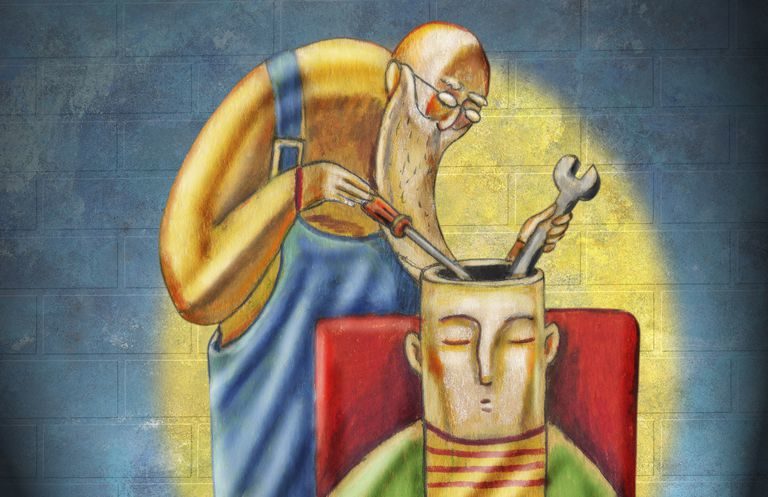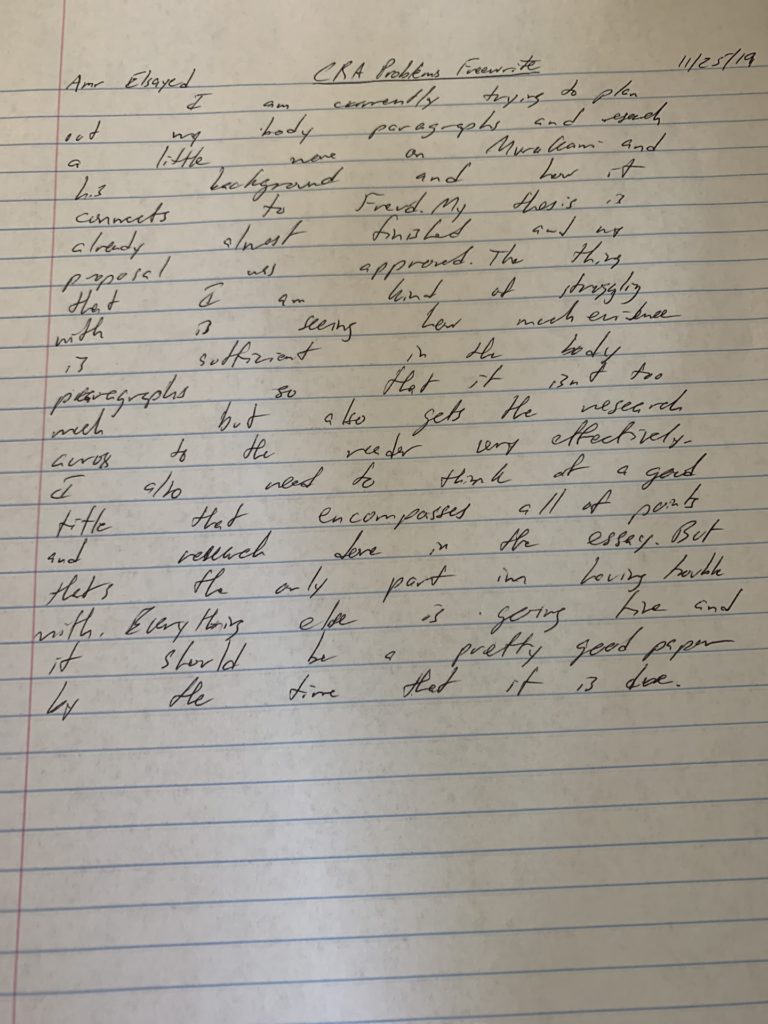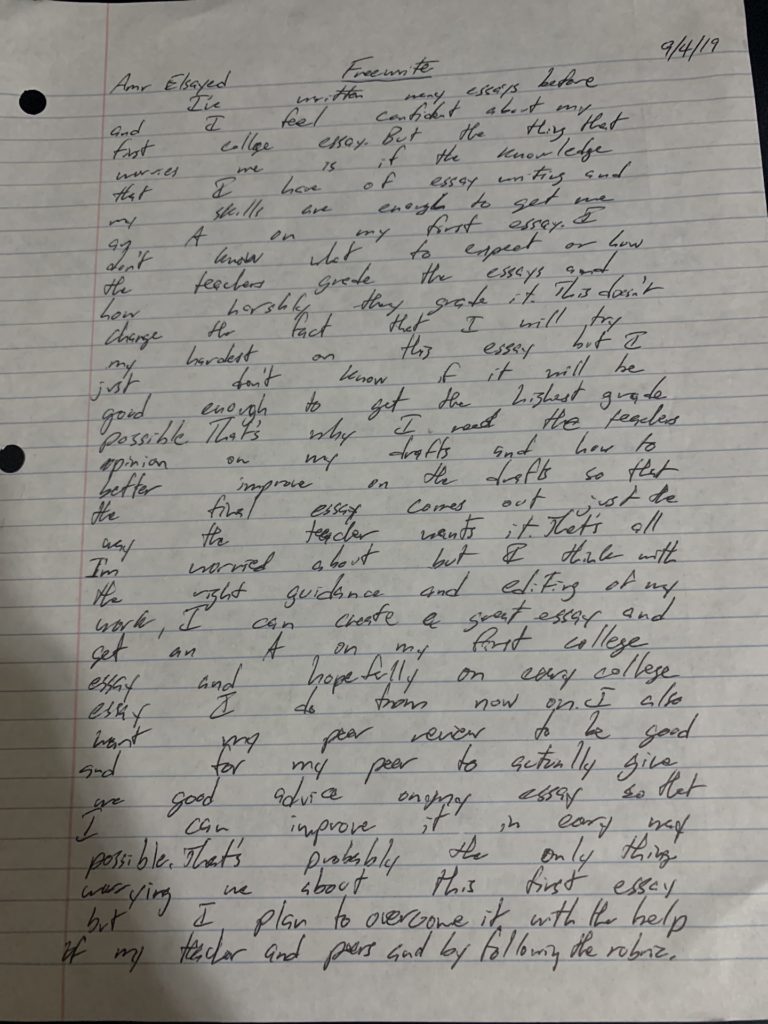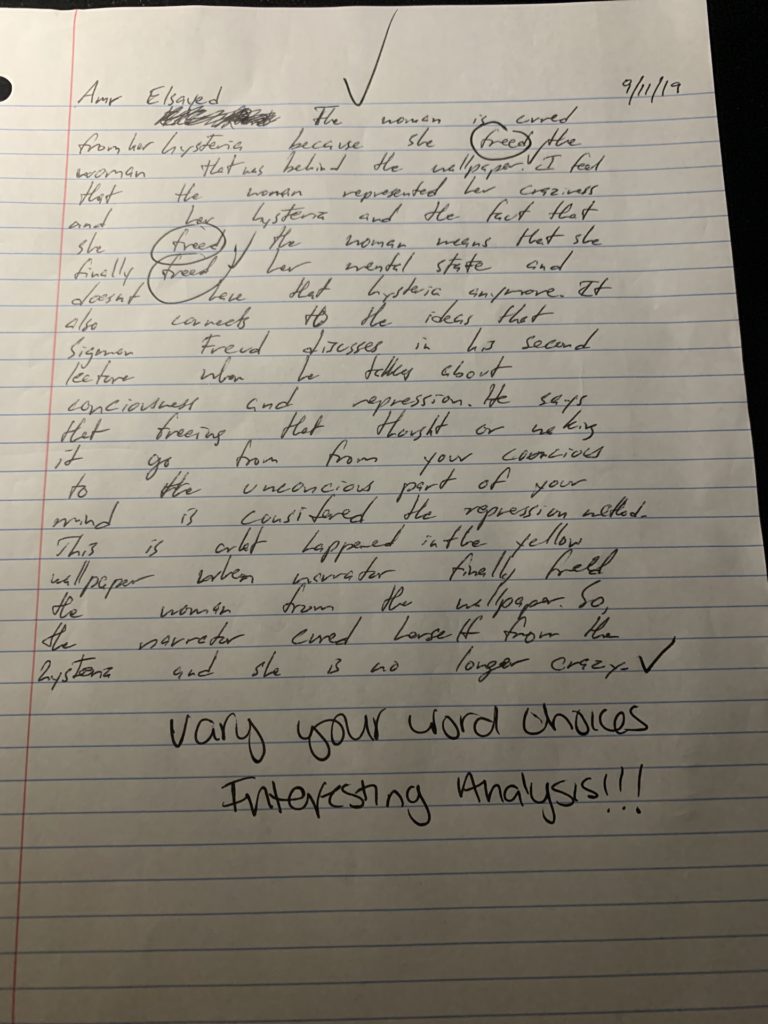The Loser’s Place in Society
Murakami’s view and critique of society can be seen thoroughly in “Super-Frog saves Tokyo”, and can be seen clearly through a Freudian lens which are analyzed more thoroughly in “Five Lectures on Psychoanalysis” and “The Dissection of the Psychical Personality”. Looking through the Freudian microscope, the short story displays multiple instances of wish fulfillment, as well as the intricate conflicts between the id, the ego, and the super ego that are shown to be present in Katagiri’s mind. In the 1990’s, Japan goes through many problems which include societal problems such as isolation and low self-esteem in many individuals. The country also goes through much economic obstacles that increase unemployment and cause the stock market to perform very badly. These events in Japan cause Murakami to write this story and create the character known as Katagiri. The Freudian psychoanalytical concepts that can be found throughout the story help to get a closer look at Katagiri, the worm, and the frog, so that the reader can understand more deeply on why Murakami feels this way about society and what aspects of his thoughts were put into the characters. Wish fulfillment is a big concept that governs Katagiri’s thought about his place in society and why he acts the way he does. It also affects his imagination and shows us Murakami’s critique of the people in Japan, as well as how they should start acting in their community. The conflicts between the id, the ego, and the super-ego, are the major driving sources of the whole story and dictate the actions of each character. Every character represents a certain part of the three concepts and are Katagiri’s view of society, which is also what causes him to imagine all of these characters. Giving these characters and their corresponding psychoanalytical concepts a closer look, we can see a clearer view of Murakami’s thoughts and critique of society. This is crucial to the purpose of the text and why he wrote it at this time in Japan.
Murakami’s creation of the character, Katagiri, provides the reader with a deeper understanding of Murakami’s opinion of the Japanese society in 1995. Through a Freudian lens, we can see that wish fulfillment is a big factor of Katagiri’s thoughts of himself and the way he sees himself in society. Katagiri thinks of himself as a useless citizen and one that doesn’t deserve much praise or attention from others. “I do get some recognition within the division for my ability to collect on loans, but no real respect. I don’t have a single person who likes me, either at work or in my private life” (Murakami 7). Katagiri explains to frog his view of himself and doesn’t seem to have much self-esteem or confidence in himself. He feels that society has brought him down and pressured him into feeling this way. The Freudian concept starts to appear when Frog responds to him. Freud explains the wish fulfillment as the mind trying to use the imagination or dreams to conjure something up to help fulfill those wishes in the person’s mind. “The true meaning of the dream, which has now taken the place of its manifest content, is always clearly intelligible; it has its starting-point in experiences of the previous day and proves to be a fulfilment of unsatisfied wishes. The manifest dream, which you know from your memory when you wake up, can therefore only be described as a disguised fulfilment of repressed wishes” (Freud 2222). Freud goes into detail on why this happens and says that the imagination or dream is another version or a “disguised” version of the repressed wish. In Katagiri’s case this would be the wish of having a vital role in society and becoming a better citizen in the Japanese society. The way his mind deals with this is through Frog which the mind has created to fulfill that dream in the “disguised” form which is a giant frog. “Because, Mr. Katagiri, Tokyo can only be saved by a person like you. And it’s for people like you that I am trying to save Tokyo” (Murakami 7). This is the wish fulfillment at work here. The mind has created the frog to meet the demands of Katagiri’s repressed wish which is being a better citizen and doing something good for the people of Japan, especially because Japan is in a trying time right now in terms of crime and economical problems. The wish fulfillment concept is one of the main reasons the frog was created in Katagiri’s head and a major push to the purpose of the Murakami’s text.
The conflicts between the id, the ego, and the super-ego, are the major problems in this story and are what cause the whole Frog situation to happen in the first place. It also helps Katagiri realize his potential place in society, as well as fix his thoughts of how he fits into the Japanese society. Each concept represents a different character. The ego is Katagiri because it is his opinion or how he feels about himself in society and how he feels worthless. This is important because this is what the super-ego and the id are trying to dominate and change. The super-ego is the Frog which is the creation of the imagination to try to overtake the ego and make him change his mind on how much he is worth amongst the Japanese people. Freud goes into the super-ego further in his “The Dissection of the Psychical Personality”, in which he states “The super-ego applies the strictest moral standard to the helpless ego which is at its mercy; in general it represents the claims of morality, and we realize all at once that our moral sense of guilt is the expression of the tension between the ego and the super-ego” (3). The super-ego is the moral part of the equation and tries to pressure the ego into doing what is morally right, which in the case of this story, is trying to raise the self-esteem of Katagiri. It is also helping him to realize his place in society. The id is other side of the equation which is in conflict with the super-ego and it represents the worm. The worm’s position in the story is to bring Katagiri down and make him have the same thoughts of himself, where he is not respected and unimportant to society. “This is the key thing: I need your courage and your passion for justice. I need you to stand behind me and say, ‘Way to go, Frog! You’re doing great! I know you can win! You’re fighting the good fight!’” (Murakami 5). The super-ego, or the Frog, sees the id as the threat to Katagiri and that is why he is encouraging him to help fight the id, or the worm. The worm is the one trying to bring Katagiri down and the Frog is trying to make it end another way where Katagiri realizes his potential to become a better citizen and feel better about his place in society. In the Freudian view, the id and the super-ego are in a battle to see which one can control the ego and make it go in the direction that they want it to go in. These are the conflicts that are going on between the three in Katagiri’s head.
Murakami’s creation of these characters and the analysis of the Freudian concepts gives a closer look at his critique of Japan’s society in the 1990’s. Japan went through a lot of trouble and turmoil in this decade and some of the major problems include crime, education, and the economy. This caused many people to be discouraged from helping out their country and making it a better place. In the book, “The Strange Child: Education and the Psychology of Patriotism in Recessionary Japan”, Andrea Arai explains these problems in Japan from a young person’s point of view. “The bursting of the financial bubble in the early 1990s and prolonged financial crisis have meant not only fewer opportunities for stable work but an entire set of expectations without guarantees and with recriminations that had not existed before” (Arai 146). Financially, the country was going through a recession and jobs were not that easy to find. Many at the time were struggling to make a good living to support themselves or their education. This caused many people to be discouraged and have low self-esteem about their place in society. Apart from the economic obstacles the country is going through there was also problems with isolation and low self-esteem. A big number of people at the time were starting to become very unsocial and are not socially active which can really hurt the individuals place or reputation among his/her peers or people in his community. In a detailed report written by Kwan R. Laurel, “Japan After Japan. Social and Cultural Life From the Recessionary 1990s to the Present”, he talks about one of the reasons behind this social crisis that is happening in the 90’s. “…but that the children of Japan, and perhaps most children living in countries attached to global capitalism, are living lonely and isolated lives that offer them nothing except anime characters that have become their intimate companions all throughout in their formative years” (Laurel 664). As a result of these social problems between the citizens of Japan, low self-esteem and a journey to find one’s real place in society has become very evident at that time. This is the reason for Murakami’s writing of “Super-Frog Saves Tokyo”. His message to the people of Japan is to try to reach their potential as better citizens in Japan in a trying time such as this one. He’s trying to show people through his characters that change is possible and that they can overcome the challenges set on them by society. That’s why the Frog represents the super-ego, because it is what’s trying to make Katagiri see the right thing. It’s why the story is called “Super-Frog Saves Tokyo”.
To sum everything up, Murakami tries to send his message to the people of Japan through the story “Super-Frog Saves Tokyo” by creating these characters. Looking at them through the Freudian lens and realizing that wish fulfillment and the id, the ego, and super-ego are at play here, gives readers a deeper understanding of his message. It also helps to unlock the answers that he is trying to give us and on how to make society a better place for everyone.
Works Cited
Hnjakn, Jsw. “LECTURE XXXI THE DISSECTION OF THE PSYCHICAL PERSONALITY LADIES AND.” Academia.edu, https://www.academia.edu/16210114/LECTURE_XXXI_THE_DISSECTION_OF_THE_PSYCHICAL_PERSONALITY_LADIES_AND.
Rasch. “About Psychoanalysis.” Sigmund Freud: 5 Lectures about Psychoanalysis, https://www.rasch.org/over.htm.
Rubin, Jay, and Haruki Murakami. “Super-Frog Saves Tokyo by Haruki Murakami – GQ June 2002.” GQ, GQ, 10 Mar. 2017, https://www.gq.com/story/haruki-murakami-super-frog-saves-tokyo-full-story.
Shibboleth Authentication Request, https://web-b-ebscohost-com.ccny-proxy1.libr.ccny.cuny.edu/ehost/detail/detail?vid=0&sid=7bd3bd2e-6834-4e60-a213-68ea3691af4e@pdc-v-sessmgr05&bdata=JnNpdGU9ZWhvc3QtbGl2ZQ==#AN=1160584&db=e000xna.
Shibboleth Authentication Request, https://web-b-ebscohost-com.ccny-proxy1.libr.ccny.cuny.edu/ehost/detail/detail?vid=29&sid=595c9d39-6cbb-4a0b-9226-d8719c02ce3b@pdc-v-sessmgr03&bdata=JnNpdGU9ZWhvc3QtbGl2ZQ==#AN=35117140&db=a9h.
Critical Researched Literary Analysis Essay: Reflection
The genre of the paper was a research paper where the goal was to analyze the author’s critique of society through the details and literary elements of their text. Then to connect the text to Freudian concepts which help with the understanding of the critique of society portrayed by the author. That’s the type of paper that had to be written. I was motivated to write this paper because I really enjoyed reading “Super-Frog Saves Tokyo” and I was really amazed by the Freudian concepts present throughout the story. Looking at them closer helped me to see the Murakami’s message and his opinion of the Japanese society in the 1990’s. The purpose of the paper is to make people see the Freudian concepts much clearer, as well as let them know the message that Murakami is sending to the readers. I also hope for readers to see why Murakami made these characters and what he’s trying to say through these characters actions. This is very crucial to understanding the whole story and to seeing what part the Freudian psychoanalytical concepts played in the story. The potential audience of the essay are people who are looking to find out more about Murakami and specifically why he wrote “Super-Frog Saves Tokyo”, as well as for the ones who are trying to find out his message to the Japanese society in the 1990’s. This can also be very useful for readers who want to look at the short story through Freud’s eyes and what his ideas have to do with Murakami’s story. The relationship between me and the audience is probably an informative and persuasive one because I am trying to make the readers see a specific point of view from this whole story and how it connects to society and to Freud. I am doing this through a paper that can be read online which makes it accessible to many people who want to find out more about these topics. That is my stance in this paper and the whole subject.






